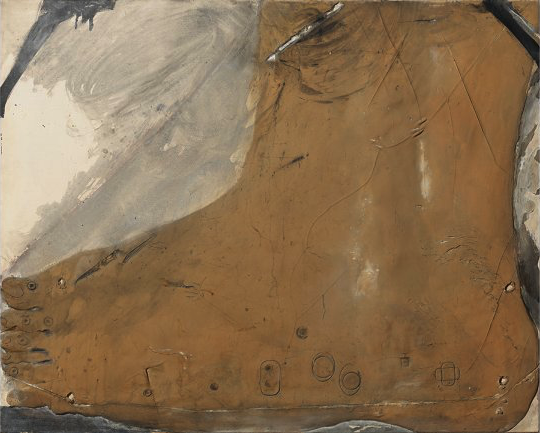 Antoni Tàpies, Matèria en forma de peu (Matter in the Form of a Foot), 1965. Fundació Antoni Tàpies, Barcelona. © Fundació Antoni Tàpies, Barcelona/VEGAP, Madrid, 2024. Photograph: © FotoGasull
Antoni Tàpies, Matèria en forma de peu (Matter in the Form of a Foot), 1965. Fundació Antoni Tàpies, Barcelona. © Fundació Antoni Tàpies, Barcelona/VEGAP, Madrid, 2024. Photograph: © FotoGasullANTONI TÀPIES - The Practice of Art
Museo Nacional Centro de Arte Reina Sofía - ( 21 February - 24 June 2024 )
To mark the centenary of the birth of Antoni Tàpies (1923–2012), the Museo Reina Sofía and Fundació Antoni Tàpies have organised one of the most complete exhibitions on the artist to date, spanning over 220 works from museums and private collections from all over the world to shine a light on his career arc from 1943 to 2012.
A self-taught artist, music lover and bibliophile, Tàpies constantly wrote and reflected on the human condition, his historical situation and artistic practice, particularly on the limits and contradictions of painting. His beginnings were marked by the legacy of historical avant-garde movements and his ties with, until the early 1950s, the Catalan avant-garde group Dau al Set, after which he embarked upon an extensive stage of experimentation with matter — characterised by the use of materials that were alien to artistic practice, for instance marble dust or cement — earning him international recognition.
From the 1960s onwards, he carried out a series of objectual undertakings, in which the matter present in his paintings began to take on the appearance of daily objects as he employed them to create three-dimensional works. At this time, his pollical commitment to anti-Francoism also became more clearly expressed in his work. The start of democracy in Spain, and with it a new cultural reality, coincided with fresh materic investigations, the incorporation of varnish and the influence of Eastern spirituality — reflecting his multiple interests — which would give rise to more refined works elevated with great lyricism. In the last two decades of his life, as one century made way for the next, a sense of nostalgia swept over Tàpies’s oeuvre, with an awareness of his advanced years, death and illness the presiding themes.
Through the selected works, some of which have not been shown together for many years, this exhibition foregrounds the prolific career of Tàpies, resituating his work and influences in recent art history
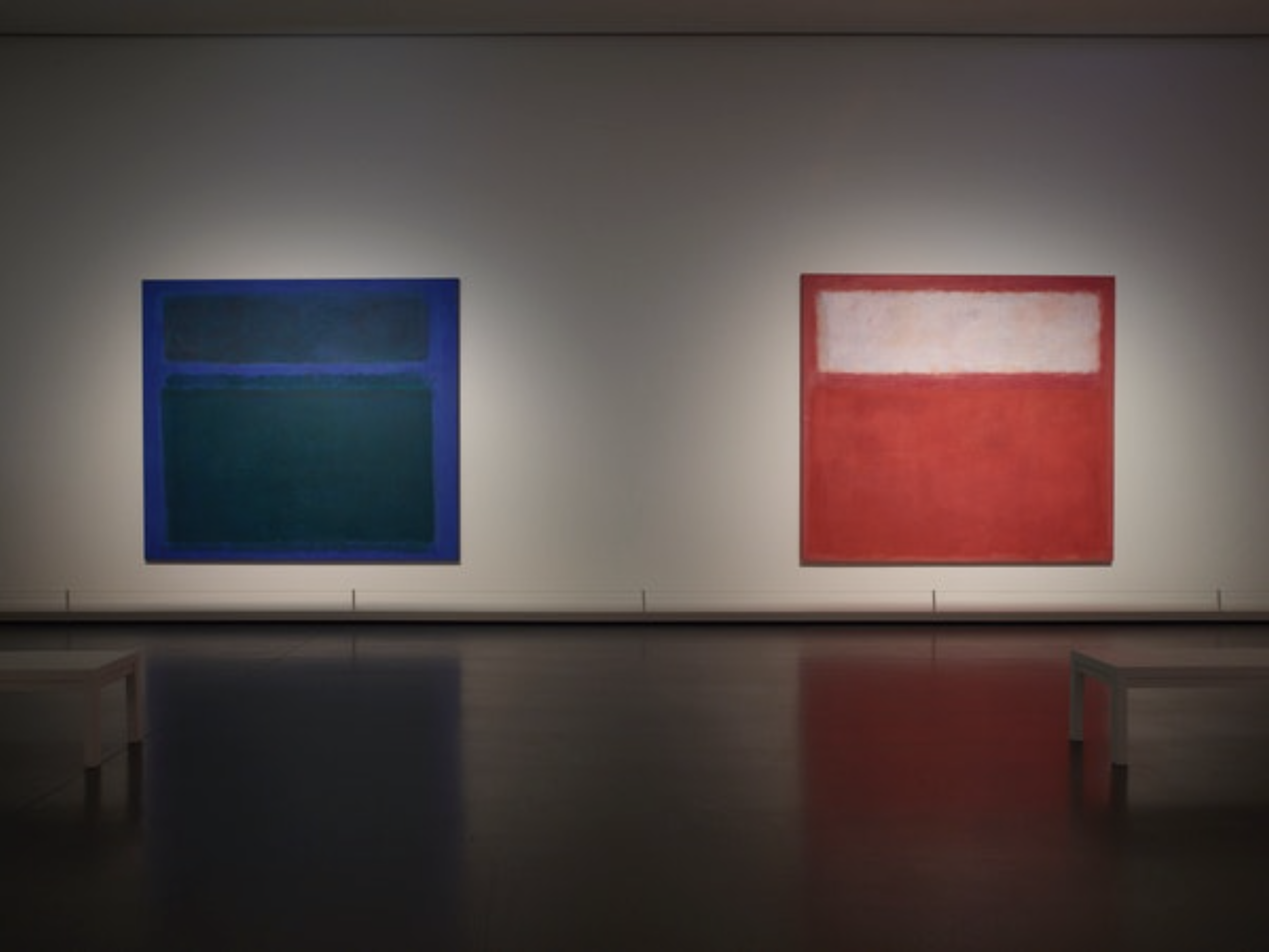 Vue d'installation de l'exposition Mark Rothko, galerie 5, niveau 1, salle Seagram MuralsParis.© 1998 Kate Rothko Prizel & Christopher Rothko - Adagp,Paris, 2023
Vue d'installation de l'exposition Mark Rothko, galerie 5, niveau 1, salle Seagram MuralsParis.© 1998 Kate Rothko Prizel & Christopher Rothko - Adagp,Paris, 2023MARK ROTHKO
La Fondation Louis Vuitton ( Paris ) ( 18.10.2023 - 02.04.2024 )
The exhibition opens with intimate scenes and urban landscapes – such as visions of the New York subway – that dominate Rothko’s output in the 1930s, before his transition to a repertoire inspired by ancient myths and surrealism which Rothko uses to express the tragic dimension of the human condition during the War.
From 1946, Rothko makes an important shift towards abstract expressionism. The first phase of this switch is that of Multi-forms, where chromatic masses are suspended in a kind of equilibrium on the canvas. Gradually, these decrease in number, and the spatial organization of his painting evolves rapidly towards Rothko’s “classic” works of the 1950s, where rectangular shapes overlap according to a binary or ternary rhythm, characterized by shades of yellow, red, ochre, orange, but also blue, white…
In 1958, Rothko is commissioned to produce a set of wall paintings for the Four Seasons restaurant designed by Philip Johnson for the Seagram Building in New York – the construction of which is overseen by Ludwig Mies van der Rohe. Rothko later decides not to deliver the paintings and keeps the entire series. Eleven years later, in 1969, the artist donates nine of these paintings – which differ from the previous ones on account of their deep red hues – to the Tate Gallery, which dedicates a room in its collections exclusively to Rothko. this series is exceptionally presented in the Fondation exhibition.
In 1960, the Phillips Collection dedicates a permanent room – the first “Rothko Room” – to the artist. The room is designed in close collaboration with him and is also featured in the exhibition. In 1961, the Museum of Modern Art in New York organizes the first major retrospective, an exhibition that subsequently travels to several European cities (London, Basel, Amsterdam, Brussels, Rome, and Paris). In the 1960s, Rothko accepts other new commissions, most notably the chapel John and Dominique de Menil in Houston, which is inaugurated in 1971 and named the Rothko Chapel.
While Rothko favors darker tones and muted contrasts since the late 1950s, the artist never completely abandons his palette of bright colors, as evidenced by several paintings from 1967 and by the last red painting left unfinished in his studio. Even in the case of the 1969-1970 Black and Grey series, a simplistic interpretation of the work, associating grey and black with depression and suicide, is best avoided.These works are displayed in the tallest room in the Frank Gehry building, alongside Alberto Giacometti’s large-scale sculptural figures, creating an environment that is close to what Rothko had in mind for a UNESCO commission that was never realized.The permanence of Rothko’s questioning, his desire for wordless dialogue with the viewer, and his refusal to be seen as a “colorist” are all elements allowing a new interpretation of his multifaceted work in this exhibition.
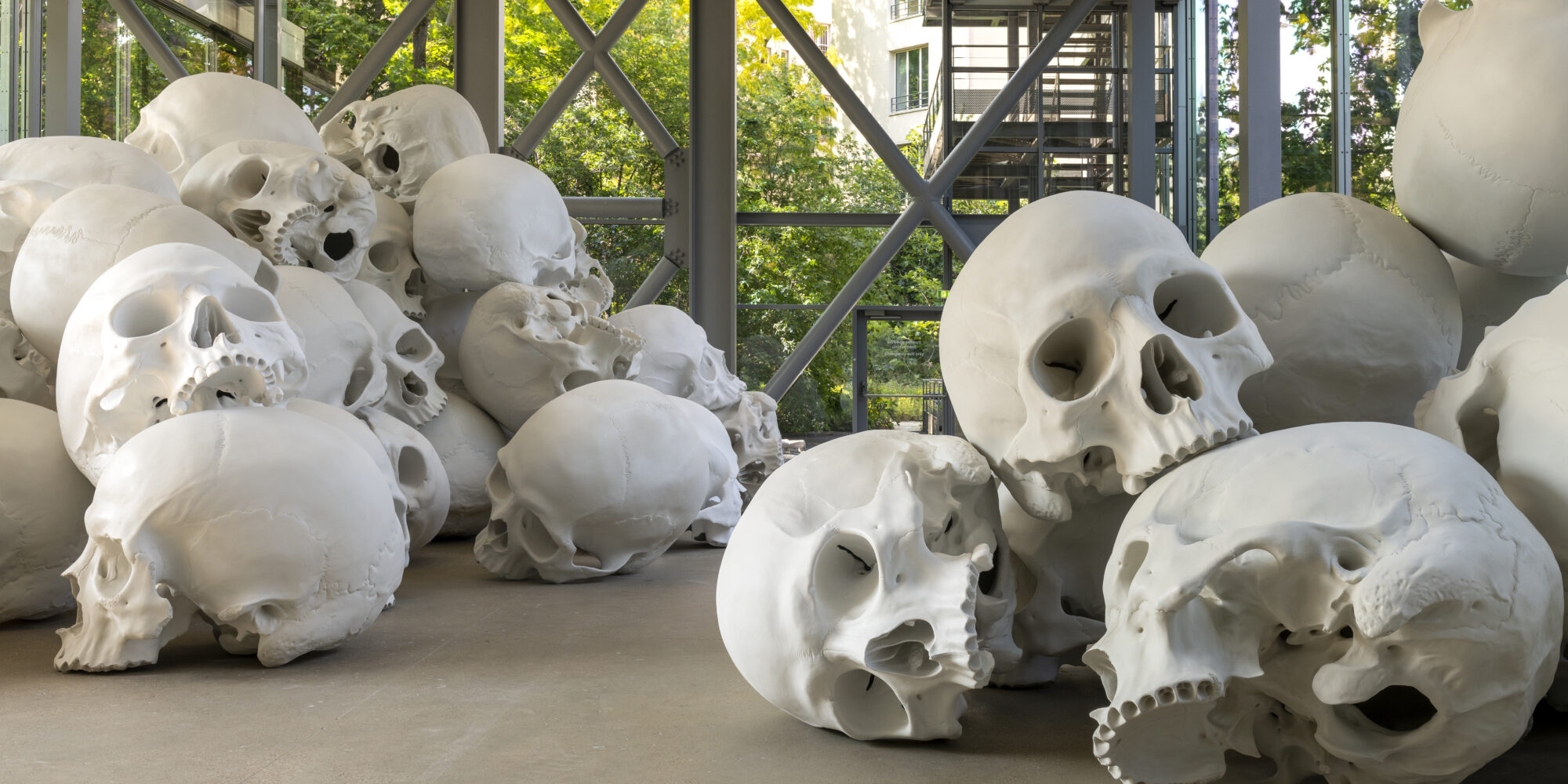 Ron Mueck. Mass, 2017 Photo © Marc Domage
Ron Mueck. Mass, 2017 Photo © Marc DomageRON MUECK
The Fondation Cartier pour l’art contemporain - Paris ( 08/06 - 05/11 2023 )
Born in Melbourne in 1958 and living in the UK since 1986, Ron Mueck has developed a body of work which touches on the universal, and has profoundly renewed contemporary sculpture. His uncanny and convincing characters, always sculpted on an astonishing scale, take months, or sometime years, to create. From a period of just over twenty five years his total oeuvre consists of 48 works, the most recent to be completed in time for this exhibition’s opening.
The works of Ron Mueck, at once deeply mysterious and extremely genuine, imbue reality with a dreamlike quality inviting us to confront our own relationship to the body and, more broadly, to existence.
In its scale and ambition, the monumental installation Mass is the centrepiece of the exhibition and represents a milestone in the artist’s career. Commissioned by the National Gallery of Victoria (Melbourne, Australia) in 2017, Mass comprises one hundred giant human skulls piled high and reconfigured by the artist for each venue. The installation offers a physical and psychological experience that captivates visitors and encourages them to reflect on fundamental aspects of human existence. The title alone provides a glimpse of the work’s diverse interpretations. The multiple meanings of the word “mass”, from disordered heap to formal religious ceremony, are starting points for each viewer’s personal encounter.
The iconography of the skull is itself ambiguous; associated with the brevity of human life in art history, and ubiquitous in popular culture. For Mueck, “The human skull is a complex object. A potent, graphic icon we recognise immediately. At once familiar and exotic, it repels and attracts simultaneously. It is impossible to ignore, demanding our attention at a subconscious level.”
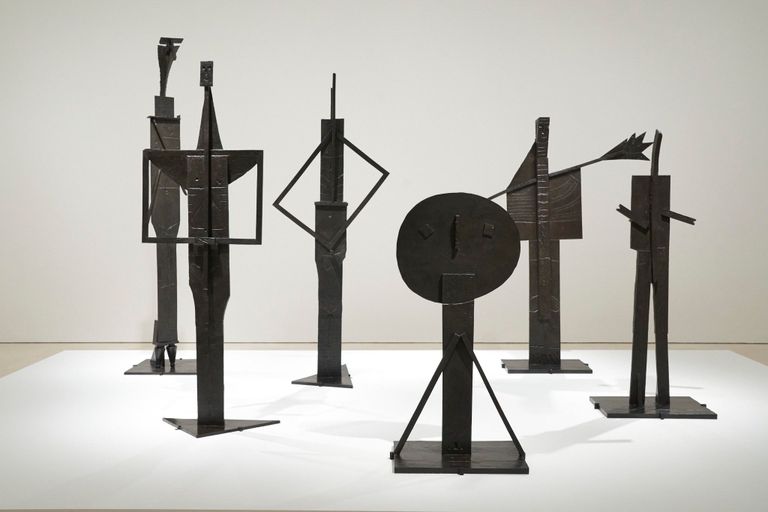 View of the exhibition rooms © Museo Picasso Málaga
View of the exhibition rooms © Museo Picasso MálagaPICASSO SCULPTOR . Matter and Body
Museo Picasso Málaga ( 09/05 -10/09 2023 )
Picasso’s sculptures were seemingly overshadowed by his paintings and played a secondary role in his prolific artistic career. The first exhibition in which his sculpture was shown was Hommage à Pablo Picasso at the Grand Palais and Petit Palais in Paris in 1966. The following year, the Tate Gallery, London, organised another exhibition devoted mainly to his sculpture; until then, his three-dimensional work had received little critical attention. However, sculpture was not a secondary concern for Picasso but a form of expression on a par with painting. According to Pierre Daix, ‘he was at least as great a sculptor as he was a painter, and for him these two aspects of his work were always complementary, for he had discovered very early on that the switching from one to the other enabled him to determine precisely what painting is and what sculpture is’.
Picasso Sculptor. Matter and Body is the first major exhibition in Spain devoted to this facet of Picasso’s work. The selection of pieces is intended to underline the central role played by the representation of the human body, taken as both a whole and as a fragment, in the Málaga-born artist’s œuvre.Like the rest of his artistic production, Picasso’s sculptures are notable for their innovation and use of unorthodox techniques and materials. Between modelling and construction, either in welded iron, wood or sheet metal, incorporating the void as a new element that was crucial to modern sculpture. Picasso’s interrelation of the various artistic disciplines can be seen in the Cubist principles of his paintings, which he translated into three dimensions in his sculptures, and in his use of found materials to create three-dimensional works, as in his collages. Drawings and two-dimensional planes of cut-out paper were transformed into sheets of metal that were folded to increase their volume. Cut and folded sheet metal was the last material that defined Picasso’s sculptural output. Translated into concrete or Corten steel, it gave rise to monumental works on an architectural scale.
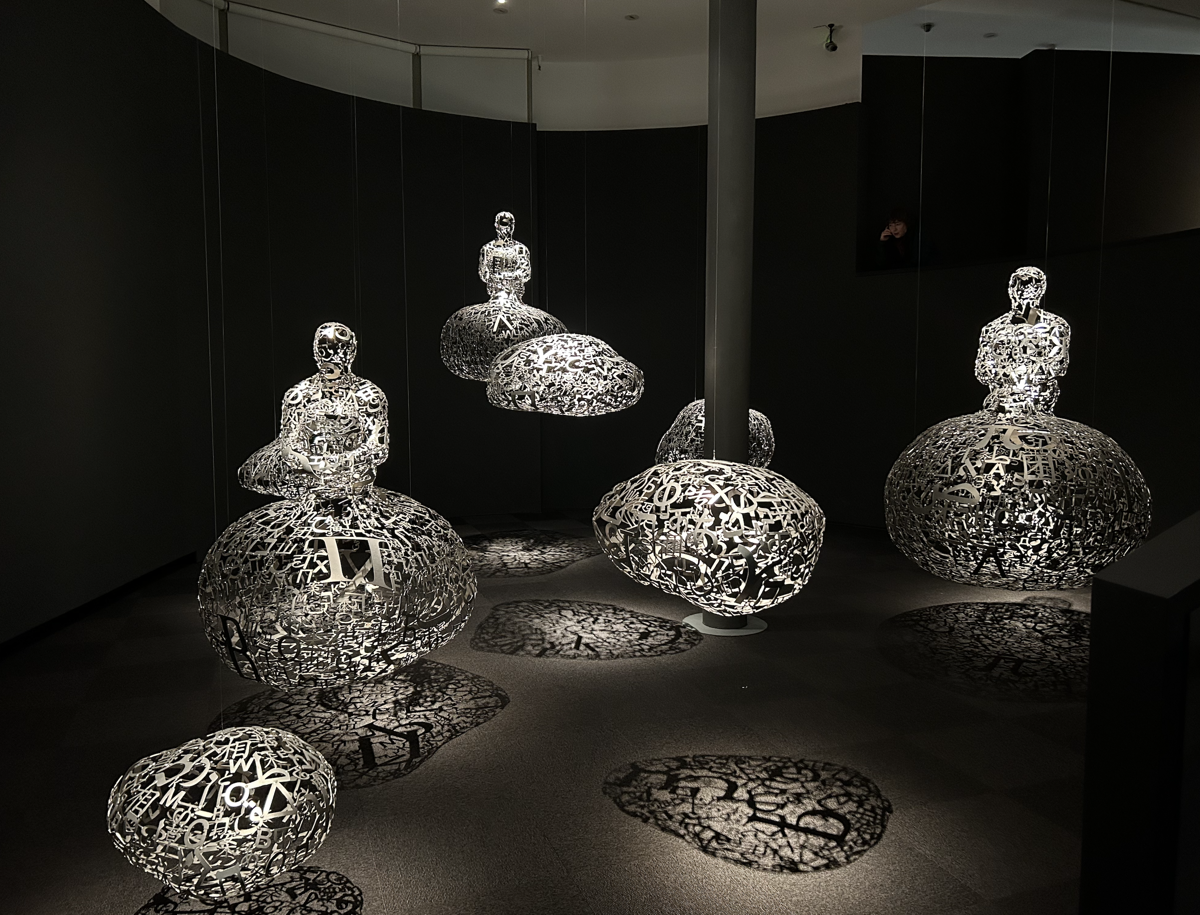 Talking Continents III» (2014), @ Jaume Plensa . Photo : Clara Huguet
Talking Continents III» (2014), @ Jaume Plensa . Photo : Clara HuguetJAUME PLENSA - Poetry of silence
Fundación Catalunya La Pedrera . Casa Mila (Barcelona) ( 31/03/2023 -l 23/07/2023 )
The most intimate and least known work of Jaume Plensa, one of the leading figures on the international contemporary art scene. A unique exhibition that shows, for the first time, the influence that literature, language and the alphabet have had on his work
Jaume Plensa (Barcelona, 1955) is one of the best-known sculptors from the international contemporary sculpture scene at the turn of the 20th to the 21st century. His current work focuses on the human figure, where two essential vectors converge: the material and words.
The exhibition at La Pedrera-Casa Milà, which covers Plensa’s work from 1990 to the present day, highlights some key aspects of his sculpture and is developed around the relationship between the artist’s creative world and letters as an element making up his work.
Plensa’s relationship with literature, and especially with poetry, will form the thread linking this exhibition, which will also include other recurring themes from his career: silence, sleep, music and family.
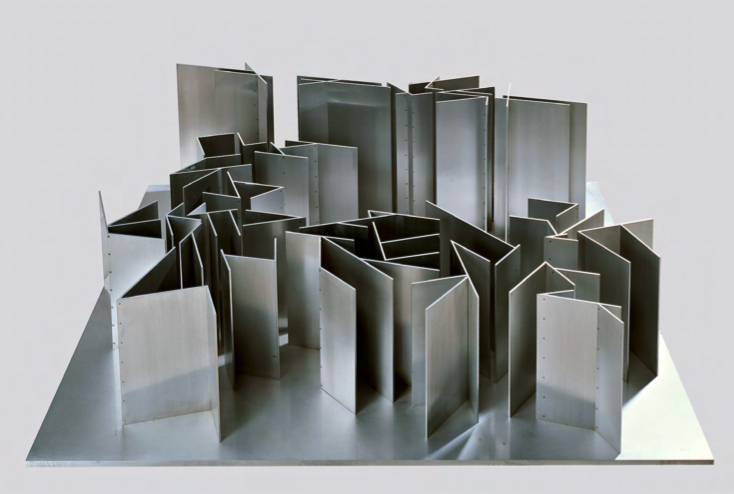 Pablo Palazuelo, Paisaje IV, 1996. Aluminio, 41 x 128 x 88 cm. © Fundación Pablo Palazuelo, 2023
Pablo Palazuelo, Paisaje IV, 1996. Aluminio, 41 x 128 x 88 cm. © Fundación Pablo Palazuelo, 2023PABLO PALAZUELO - The line as a dream of architecture
Museo ICO ( Madrid ) 02/15 - 05/07 2023
In this exhibition, Pablo Palazuelo. The line as a dream of architecture, brings together for the first time the twelve works and the twelve most representative projects that illustrate the most direct approximation that Pablo Palazuelo operated between his geometric investigations and architecture. The singularity of this exhibition, focused on the most architectural aspect of his work, has only been possible after the discovery of the legions of unpublished sketches and sketches that Palazuelo guarded jealously.
Some documents that are currently kept by the Pablo Palazuelo Foundation and that exemplify a work process that poses an astonishing similarity with that developed in an architectural project. Based on these sketches, it has been possible to outline the various stages until reconstructing his creative method, where the intense use of translucent paper and graphite lines stands out. The prominence of his compositions lies in the line. A line endowed with a poetic component inherited from Paul Klee's “line that dreams”, a quote that Palazuelo used to repeat and which serves as the origin of the title of the exhibition.
The theoretical foundation on which this exhibition is based is based on the doctoral thesis entitled Analysis of the geometry of Pablo Palazuelo from the vision of the architect, which reveals the links between the geometric process used by this artist and the architectural method. It constitutes a work where graphic studies of the different designs of Palazuelo were developed, which are currently being expanded as research work carried out in the field of the Polytechnic University of Madrid. In this way, a line of research is being consolidated whose results are being disseminated in various scientific publications where the analysis of Palazuelo's work is addressed.
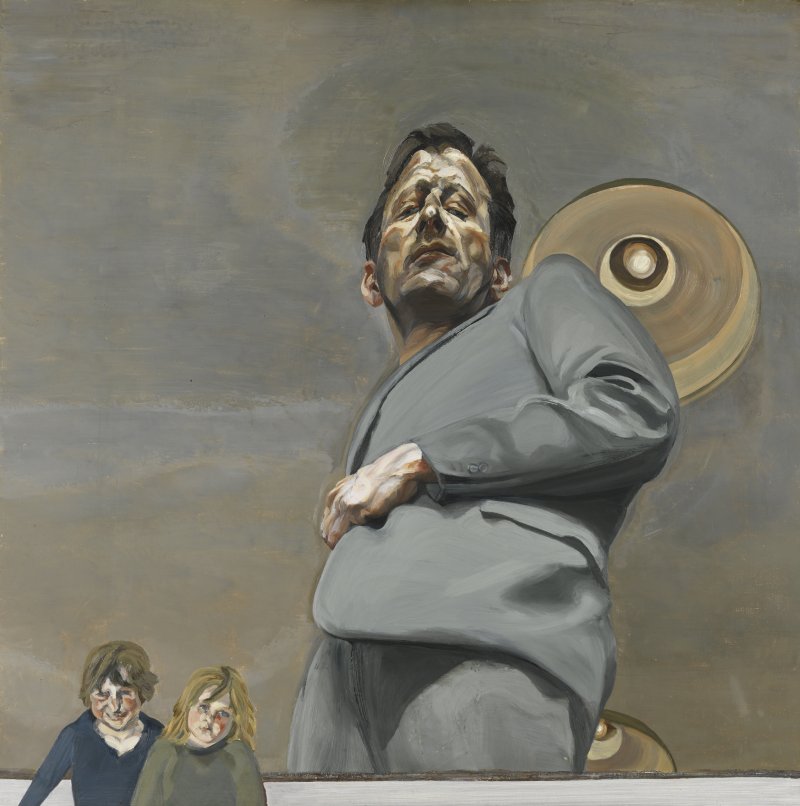 Lucian Freud Reflection with Two Children (Self-Portrait) 1965 Oil on canvas. 91 x 91 cm Museo Nacional Thyssen-Bornemisza, Madrid © The Lucian Freud Archive. All rights reserved 2023 / Bridgeman Images
Lucian Freud Reflection with Two Children (Self-Portrait) 1965 Oil on canvas. 91 x 91 cm Museo Nacional Thyssen-Bornemisza, Madrid © The Lucian Freud Archive. All rights reserved 2023 / Bridgeman Images LUCIAN FREUD . New perspectives
Museo Nacional Thyssen-Bornemisza ( 14 February - 18 June 2023 )
To mark the centenary of the birth of the British painter Lucian Freud (1922-2011) the Museo Nacional Thyssen-Bornemisza and the National Gallery in London are presenting a retrospective that features around 50 works.
Freud, one of the most outstanding figurative painters of the modern age, was born in Berlin and emigrated to London with his family in 1933, when the Nazis came to power. In his youth the family environment provided Lucian with a hefty and varied cultural background: his father was a renowned architect, his mother studied art history, and his grandfather was the famous inventor of psychoanalysis, Sigmund Freud. In adulthood the artist grew to be a legend on account of his frenetic personal life, which saw him move with equal ease in aristocratic circles and the underworld.
From the outset, Freud favoured figurative art, concentrating on portraying human beings. Self-portraits, portraits and nudes account for most of his artistic production. His oeuvre has traditionally been linked to the so-called School of London, which was not so much a school as a group of London-based figurative artists such as Francis Bacon, Frank Auerbach, Leon Kossoff and Michael Andrews.
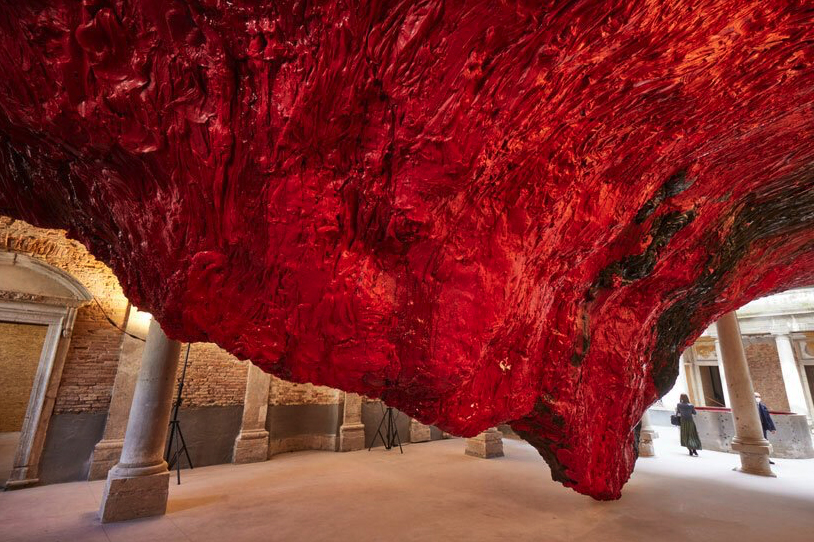 Anish Kapoor, Mount Moriah at the Gate of the Ghetto, 2022, image © David Levene
Anish Kapoor, Mount Moriah at the Gate of the Ghetto, 2022, image © David LeveneANISH KAPOOR
Galleria dell’Accademia & Palazzo Manfrin ( Venice, Italy ) ( April 20 – October 9, 2022 )
The Gallerie dell'Accademia di Venezia has organized an ambitious presentation of retrospective and new works by Anish Kapoor, the British artist famous for exploring the limits and materiality of the visible world through works that transcend their objecthood and invite wonderful interaction and sustaining Another prestigious venue, the historic Palazzo Manfrin in the Cannaregio district, complements this presentation with another important selection of large-scale, genre-defying works. Curated by art historian Taco Dibbits, director of the Rijksmuseum in Amsterdam, this exhibition reveals the full and visionary range of Kapoor's practice, his pictorial sensibility and his sculptural prowess.
Anish Kapoor said: “The light and space of Venice, and the glories of the Accademia’s collection, have long been an inspiration to me. I have come to love this city and its painters, sculptors and architects, and I feel honoured to be invited to engage in a visual dialogue with them. I hope I will be able to add something to the vocabulary of colour and form that has been Venice’s gift to the world.”
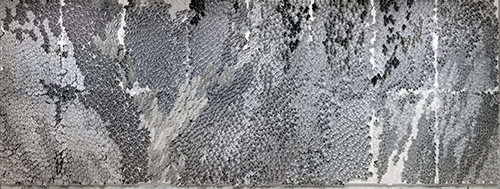 Te llamaré hoja, 2005. © Soledad Sevilla
Te llamaré hoja, 2005. © Soledad SevillaSOLEDAD SEVILLA - Te llamaré hoja
Pabellón Villanueva. Real Jardín Botánico ( Madrid ) ( 29 March - 22 May 2022 )
Soledad Sevilla (Valencia, 1944), who in 2020 received the Velázquez Prize for Plastic Arts, decided to donate that year a very important part of her artistic production to the Centro Andaluz de Arte Contemporáneo. The artist, based between Granada and Madrid, has always felt very close to the Andalusian art scene. In addition, environments such as La Alhambra or El Rompido have served as sources of inspiration for some of her best-known series. The Soledad Seville exhibition. I will call you sheet has a selection of works closely related to the environment in which they are exhibited: the Villanueva Pavilion of the Royal Botanical Garden of Madrid.
On the one hand, the tobacco dryers of the Vega de Granada and, on the other, a series of works that have the vegetable walls as a starting point. In both series, abstraction and repetition, characteristic from the beginning of her career, survive and are accentuated to end up providing these landscapes with a certain naturalistic sense. "Creation is stimulated with the gaze", as Soledad Sevilla herself points out, and this is what happened with the vision of the architecture of some dryers, which are the first works to be found in the exhibition itinerary and from which one of the the most important pictorial series of his career. As is evident in the long and fruitful career of Soledad Sevilla, constant research and tireless work show that not everything in life is random, since the desire for knowledge and its experience also determine our being and being in the world.
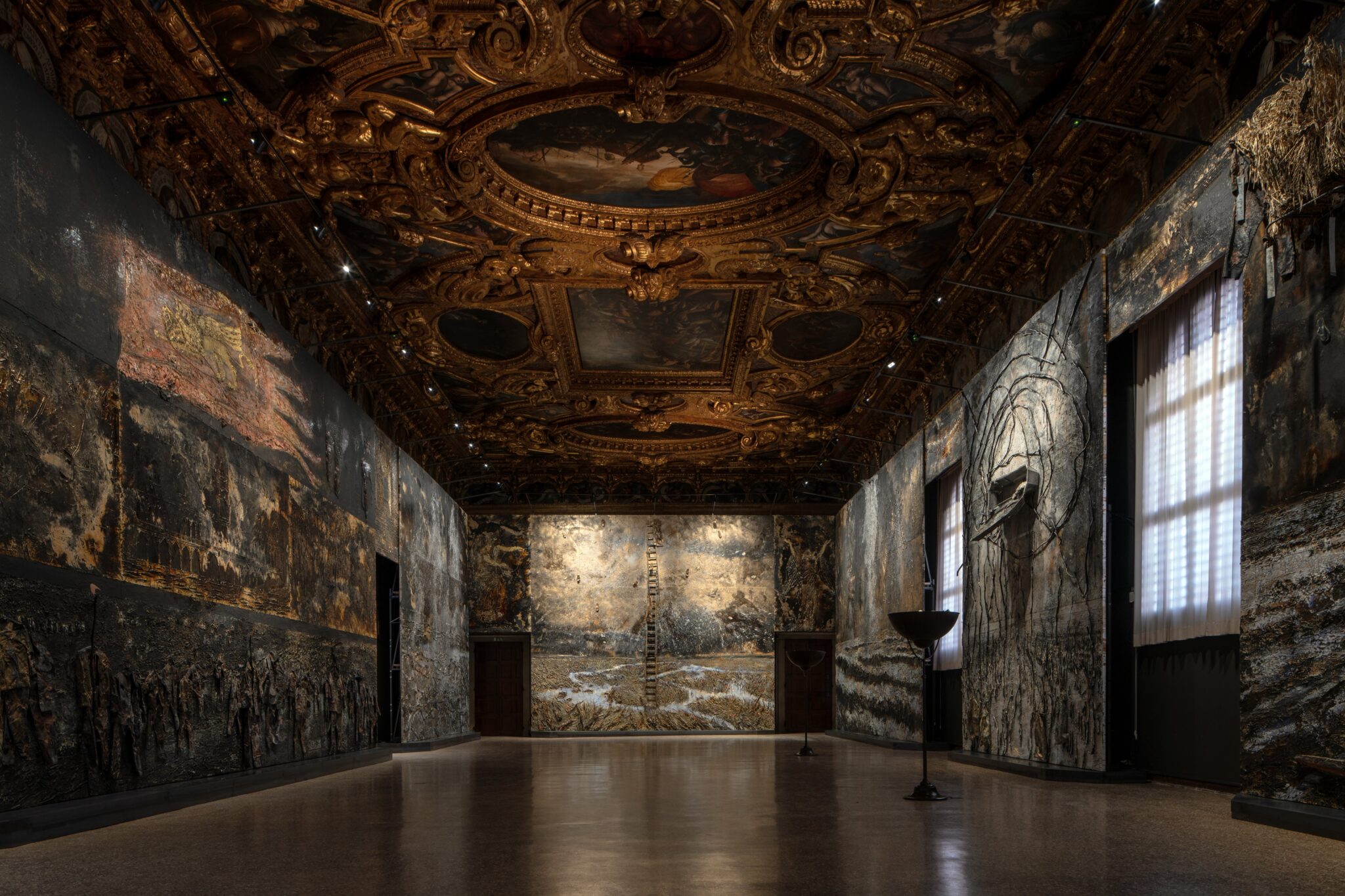 Installation view, Anselm Kiefer, Questi scritti, quando verranno bruciati, daranno finalmente un po’ di luce (Andrea Emo), 2022. © Anselm Kiefer. Courtesy Gagosian and Fondazione Musei Civici Venezia. @ Photo Andrea Avezzu
Installation view, Anselm Kiefer, Questi scritti, quando verranno bruciati, daranno finalmente un po’ di luce (Andrea Emo), 2022. © Anselm Kiefer. Courtesy Gagosian and Fondazione Musei Civici Venezia. @ Photo Andrea AvezzuANSELM KIEFER - Questi scritti, quando verranno bruciati, daranno finalmente un po’ di luce
Palazzo Ducale, Piazza San Marco ( Venezia ) ( March 26 – October 29, 2022 )
Anselm Kiefer exhibits a series of new works in an installation of site-specific paintings in dialogue with one of the most important spaces of the Doge's Palace, the Sala dello Scrutinio, and with the history of Venice.
"Sometimes it happens that there is a convergence between past and present moments, and when they meet one experiences something similar to immobility in the hollow of the wave that is about to break. Having originated in the past but belonging to something deep down. more than it, these moments are as much part of the present as of the past, and what they generate is very important. " Anselm Kiefer
Palazzo Ducale has welcomed generations of artists including Giovanni Bellini, Vittore Carpaccio, Tiziano, Veronese, Tintoretto and many others. The monumental space of the Sala dello Scrutinio, the seat designated for the election of the Doge, is richly decorated with paintings that celebrate the power of the Most Serene Republic of Venice.
Philosophical and literary references have always been central to the understanding of Anselm Kiefer's work. The exhibition takes the title These writings, when burned, will finally give some light from the words of the Venetian philosopher Andrea Emo (1901-1983), whose writings Kiefer met six years ago. Kiefer's artistic method has deep consonances with Andrea Emo's philosophical thought.
In the installation at Palazzo Ducale, Kiefer also reflects on the unique position of Venice, located between North and South, and on its interaction between East and West, finding equally significant connections between the different cultures, the history of the city and the text of the tragic work by Goethe Faust: Second part (1832).
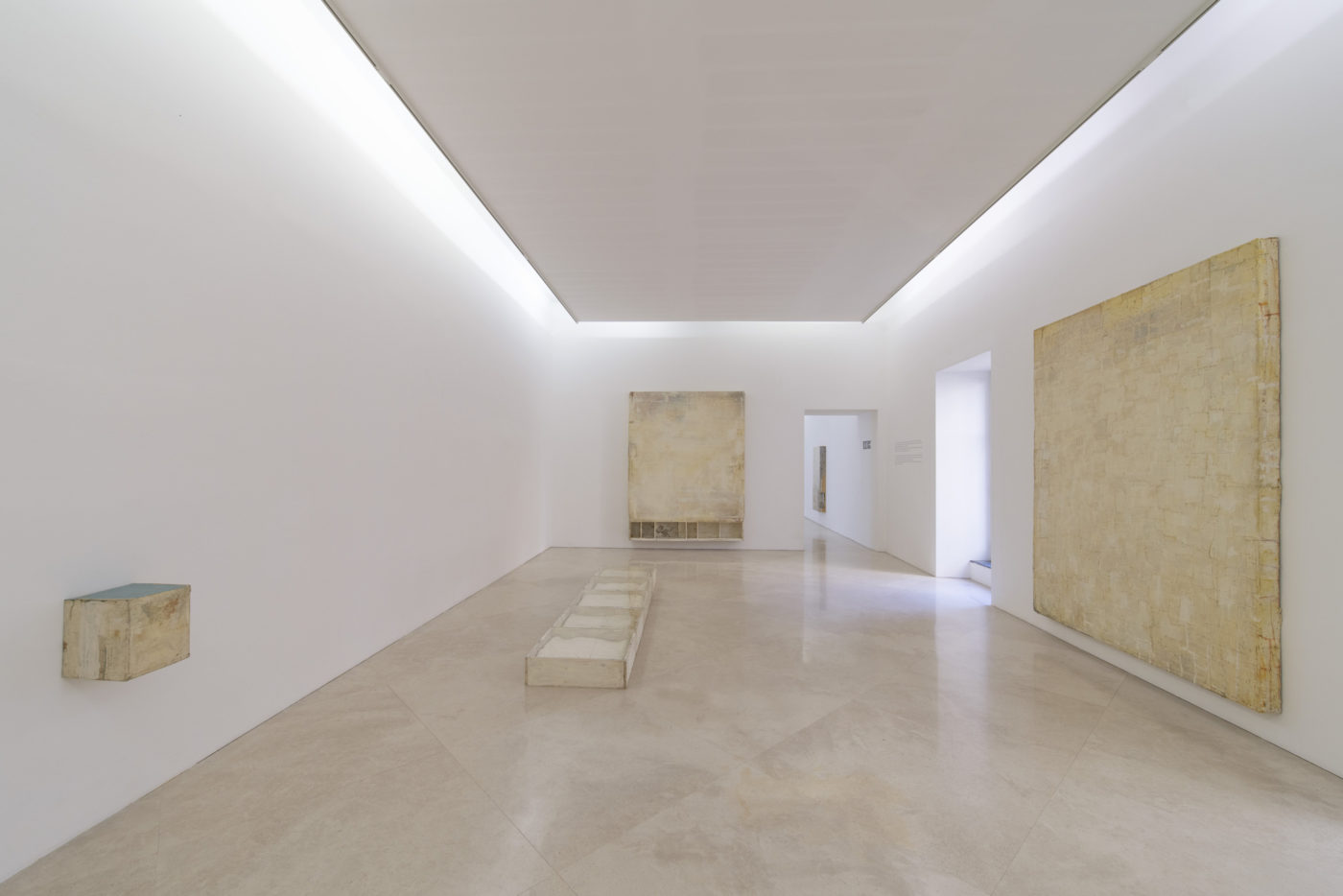 Lawrence Carroll, Exhibition view. MADRE Museo d’Arte Contemporanea Donnaregina
Lawrence Carroll, Exhibition view. MADRE Museo d’Arte Contemporanea DonnareginaLAWRENCE CARROLL
MADRE Museo d’Arte Contemporanea Donnaregina (Naples) ( 25 March - 5 September 2022 )
The exhibition, curated by Gianfranco Maraniello, is the artist's first anthology after his death in 2019.
Lawrence Carroll (Melbourne 1954 - Cologne 2019) was a protagonist of the American art scene and, at the same time, a cosmopolitan interpreter of poetic perspectives that cannot be reduced to the history of the avant-garde and neo-avant-gardes; his work, in fact, is not part of a specific artistic trend, but investigates the very possibility of painting after and beyond the primacy of the schools and theories that dominated the second post-war period.
The exhibition itinerary requires an attempt to match the characteristic way of setting up his exhibitions, which have always favored the spatial and sentimental relationships of inhabiting places over the chronological succession or the thematic compartmentalization of works in paralyzing classifications as Carroll himself has argued, declaring: "In my painting forms are always changing, their very location in space changes, this restlessness of thought and spirit is what in a certain sense makes my works 'alive' and keeps them in motion".The exhibition is organized with the collaboration of Lucy Jones Carroll for the Lawrence Carroll Archive.
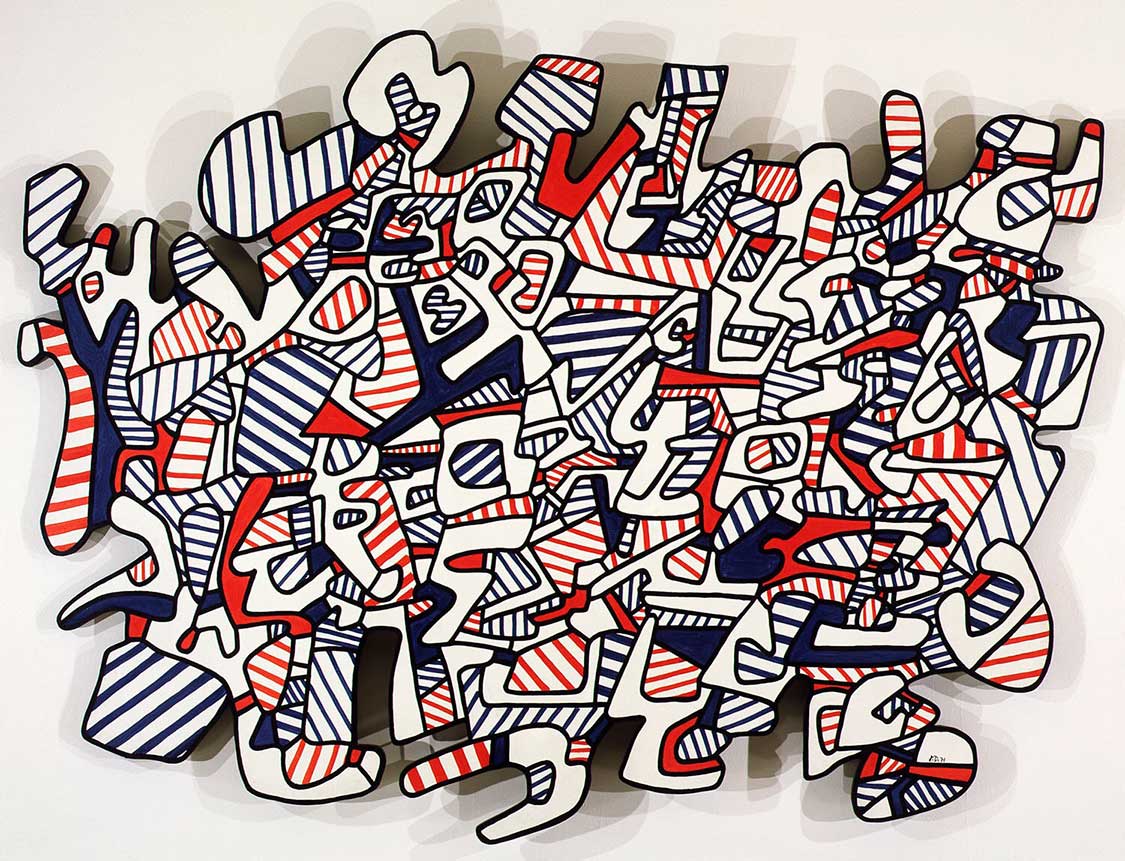 Muta permuta (Mute permute) ©Jean Dubuffet
Muta permuta (Mute permute) ©Jean DubuffetJEAN DUBUFFET - Ardent Celebration
Museo Guggenheim Bilbao ( February 25 - August 21, 2022 )
At the end of World War II, Jean Dubuffet (1901–1985) began exhibiting paintings that defied entrenched artistic values. He rejected principles of decorum and classical beauty, along with pretentions of expertise. Instead, he looked to the commonplace and the unheralded, employing crude materials, mundane subjects, and a style that spurned any outward sign of academic training. In this approach, Dubuffet was challenging norms that he believed obstructed authentic expression and devalued everyday experience. However, his goal was not only to reveal how threadbare cultural conventions were; he also wanted to illustrate the vitality of life freed from them. As he once claimed, “I would like people to see my work as a rehabilitation of scorned values and . . . make no mistake about it, a work of ardent celebration.”
Throughout his career, Dubuffet’s output was characterized by this celebratory impulse, as much as it was by his commitment to critiquing culture. His work of the 1940s and 1950s invited audiences to fundamentally reconsider the concept of beauty, and it demonstrated how worthy of admiration ordinary things could be—whether rocks, crumpled aluminum foil, or thickened paint. From the 1960s through the mid-1970s, Dubuffet showed the potential for adventure, creativity, and discovery that can be unleashed by diving into fantasy. For the last decade of his life, he strove to inspire a rethinking of the most basic structures of the mind, as he imagined the possibilities of approaching the world without the constraints of learned categories. This exhibition, drawn entirely from the collections of the Solomon R. Guggenheim Museum, New York, and the Peggy Guggenheim Collection, Venice, offers a survey of his production from these defining decades. It seeks to affirm that across Dubuffet’s shifts in focus, he kept his ever-evolving project grounded in its dedication to sharing new and revitalizing perspectives with viewers.
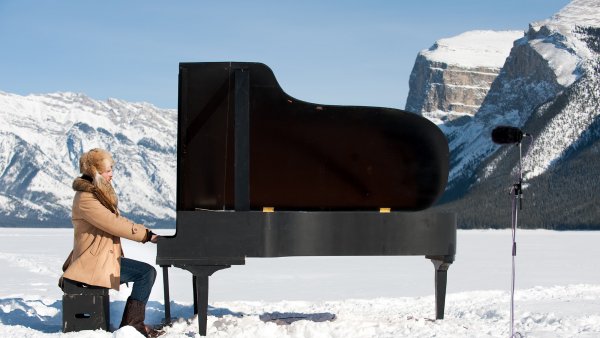 The End (2009) © Ragnar Kjartansson
The End (2009) © Ragnar KjartanssonRAGNAR KJARTANSSON - Paisajes emocionales
Museo Nacional Thyssen-Bornemisza ( Madrid ) ( February 22 - June 26, 2022 )
The Museo Thyssen-Bornemisza and Thyssen-Bornemisza Art Contemporary are presenting Emotional Landscapes, an exhibition by the Icelandic artist Ragnar Kjartansson (born Reykjavik, 1976) which for the first time brings together four of his most internationally renowned video installations, The Visitors (2012), The Man (2010), The End (2009) and God (2007), in addition to a series of watercolours. The exhibition conveys Kjartansson’s fascination with America, its landscapes and music through works set on a farm by the Hudson River and in the Rocky Mountains, accompanied by blues and jazz. It makes use of the museum’s new installation entitled American Art from the Thyssen Collection to establish dialogues with 19th and 20th century paintings.
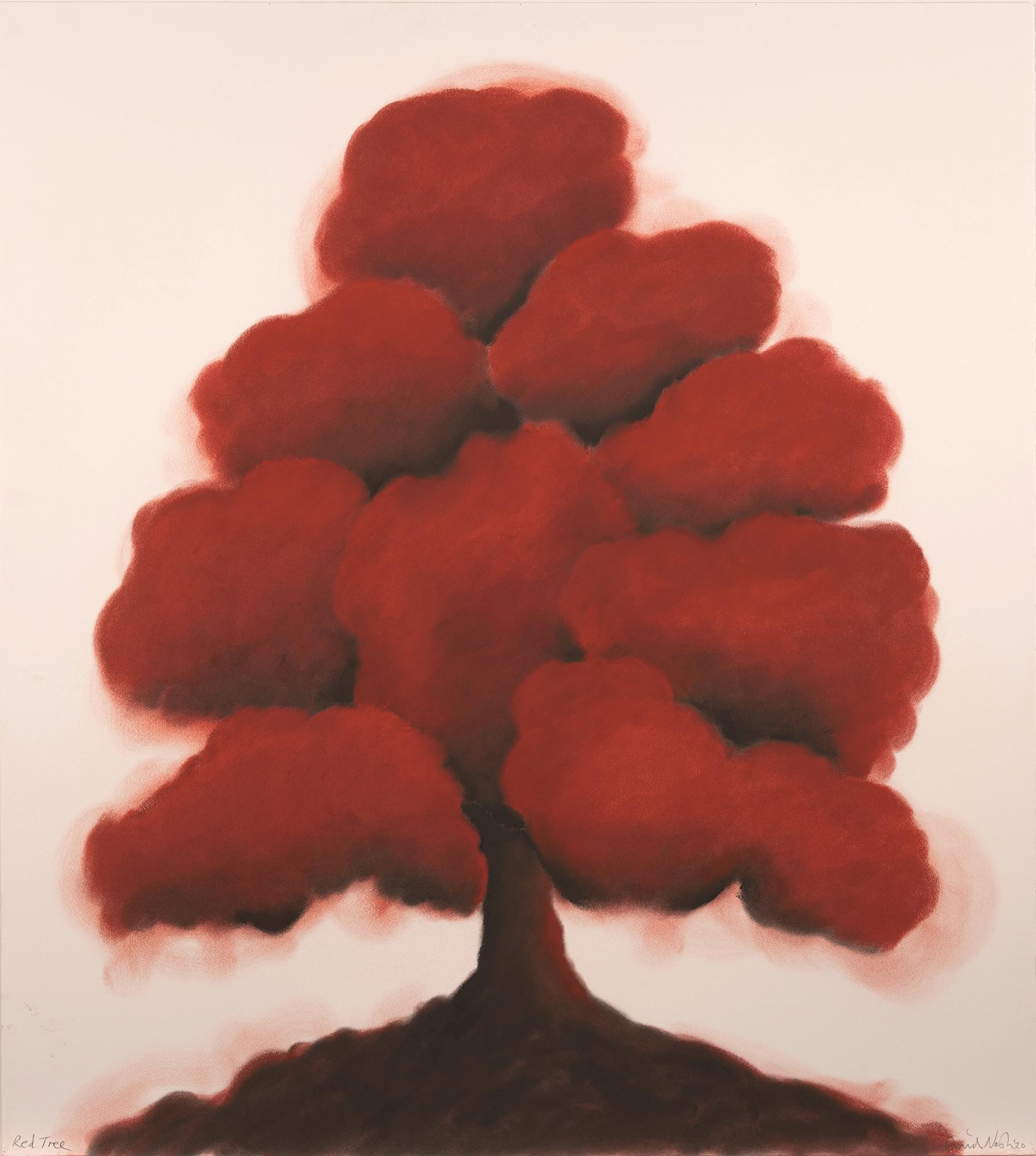 David Nash, Red Tree, 2021. Photo © Jonty Wilde
David Nash, Red Tree, 2021. Photo © Jonty WildeDAVID NASH - Full Circle
Bothy Gallery, Yorkshire Sculpture Park and The Weston Gallery ( Wakefield United Kingdom ) ( 19 February – 5 June 2022 )
David Nash has dedicated his artistic life to an evolving study of trees and wood, absorbing knowledge through haptic experience and close observation over decades. This new exhibition in The Weston Gallery is dedicated to the artist’s drawings inspired by trees, from the observational and documentary, through to intensely coloured, abstract works that capture the essence of their life force. Nash’s long association with YSP began over forty years ago and Full Circle marks an affinity between artist and organisation. In the early 1980s, he wrote in a letter regarding his forthcoming YSP residency: “environment and ecology are a first consideration for me as an artist”. This prescient and enduring occupation not only with the intersection of nature and art, but our direct human relationship with the natural environment, makes Nash’s body of work ever more pertinent as we address the climate crisis. A critical aspect of his admiration for trees, and one we might learn much from, is that “trees take just enough and give back more”.
Drawing is as central and constant in Nash’s practice as the trees it grows from. It is a way of learning about and understanding his subject, of finding form for ideas, recording and responding to forms from life. Works in The Weston Gallery, a significant number of which have never been exhibited before, will be enlivened by the natural light that floods the space and will resonate with the far-reaching landscape views.
Spanning four decades, a broad range of drawings reflects different processes and types of mark making, from fine graphite to thick, smoky charcoal, and bold swathes of colour achieved by applying pure pigment with cloth. This directness, seen across the exhibition, is a result of the fact that the artist draws immediately and rapidly from life in the landscape, driven by the particular qualities of trees and their environments. Other works reflect at greater distance, made in the studio and concentrating on embodying the sensation of a principal characteristic such as colour, as so vibrantly demonstrated in Red Tree (2021).
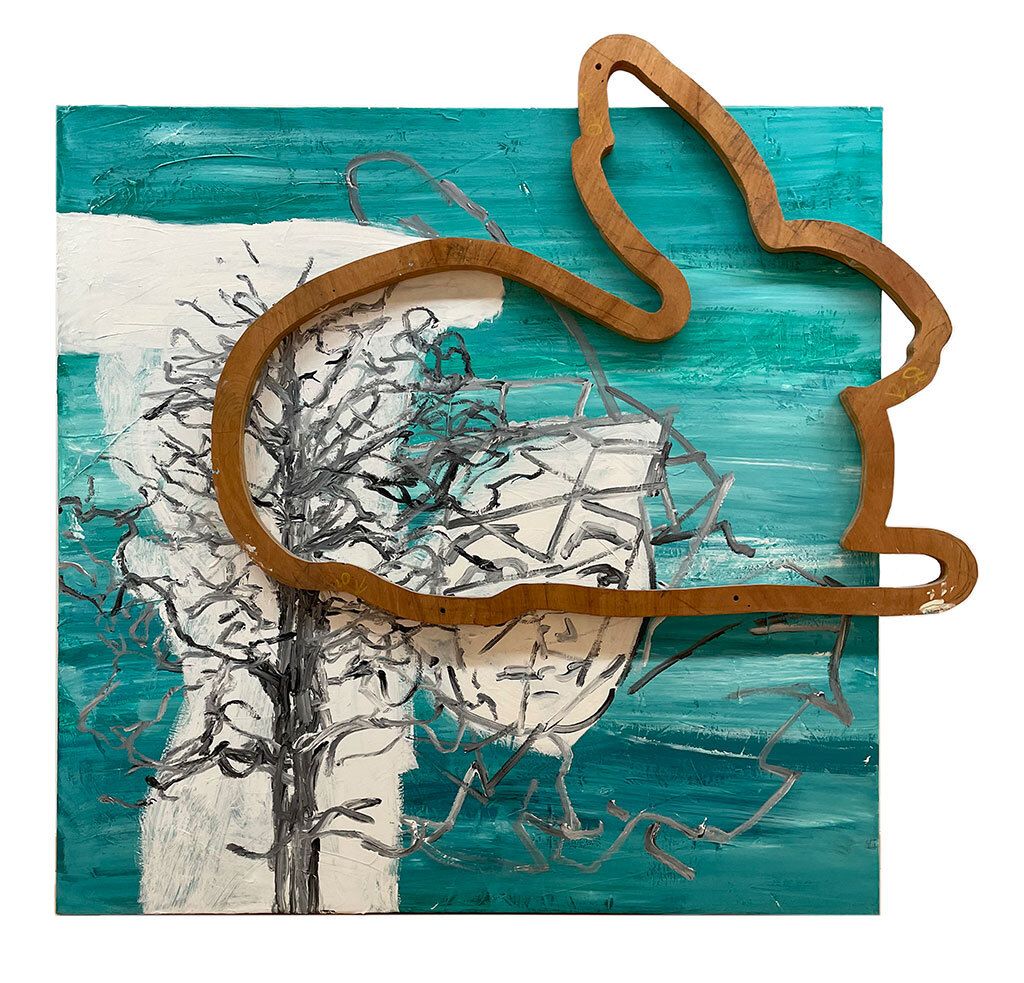 VvsH6 (2006) , © Jordi Cano
VvsH6 (2006) , © Jordi CanoUnivers JORDI CANO
ACVIC Centre d’Arts Contemporànies ( Vic ) ( 04.02 – 23.04.2022 )
The project "Jordi Cano Universe" has been structured according to various subject-areas, the first of which attempts to construct an intellectual portrait, based upon the cultural references that accompanied him throughout his life, references that were repeated insistently until they became almost obsessive. An obstinate attitude, always faithful to those authors and artists to whom, as soon as he had discovered them, he devoted himself to absorbing more of their works, and from whom he could never distance himself. A cultural universe consumed with delight, which led him to "think with his feet, hands, eyes and head", an applied ideology, perhaps unconsciously at first, but which eventually became a pedagogical tool of the first order.
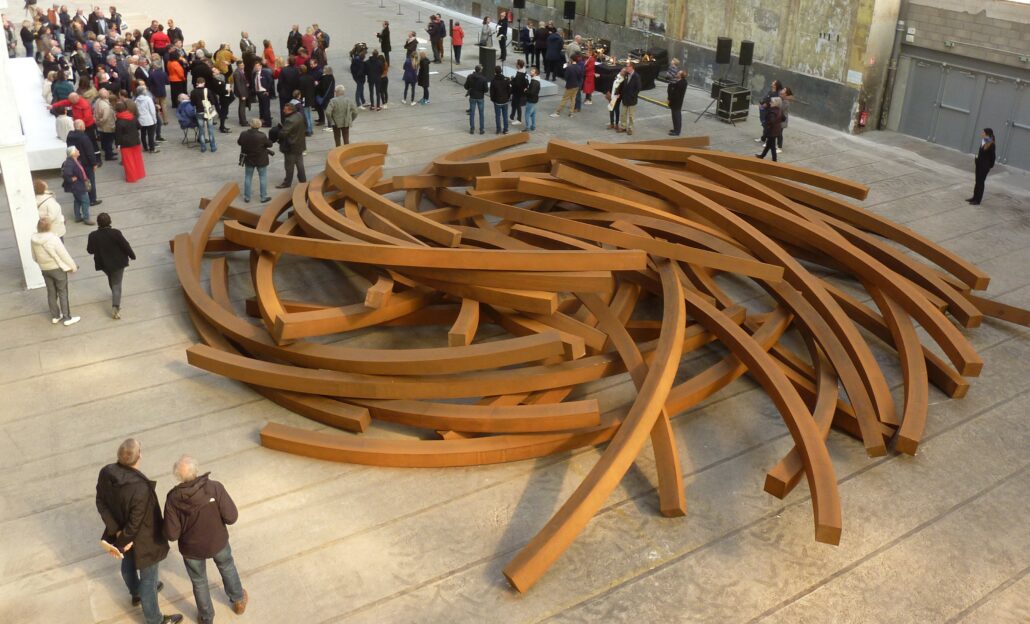 Effondrement of Arcs, Corten Steel 2019 : Lieu d'Art et Action Contemporaine (LAAC), Dunkirk, France, Photo: Vincent Bijan, LAAC Dunkirk © Bernar Venet and VG Bild-Kunst, Bonn 2022
Effondrement of Arcs, Corten Steel 2019 : Lieu d'Art et Action Contemporaine (LAAC), Dunkirk, France, Photo: Vincent Bijan, LAAC Dunkirk © Bernar Venet and VG Bild-Kunst, Bonn 2022BERNARD VENET. 1961 – 2021 60 YEARS OF PERFORMANCE, PICTURES AND SCULPTURES
Tempelhof Airport Hangar 2 and 3, Berlin (January 29 – May 30, 2022)
More than 150 works by internationally renowned French sculptor Bernar Venet show all facets of his work over the past 60 years. The 8,000 m2 exhibition in Hangars 2 and 3 at Tempelhof Airport will be open to visitors from January 29. Bernard Venet, 1961-2021. 60 Years of Performance, Painting and Sculpture is the largest and most extensive retrospective of the french artist worldwide to date. It encompasses all of his complex and extensive oeuvre as a sculptor, painter, performance artist, and radical conceptual artist. The exhibition brings together more than 150 works that reflect the artist's uncompromising and almost obsessive approach to constantly reshaping his environment through art. The retrospective is the first in a series of exhibitions to be shown over the next two years in the spectacular 8,000m2 Hangars 2 and 3 of the former Berlin Tempelhof Airport.
From the beginning in his first studio, the exhibition traces the trajectory of Bernar Venet and the creation of a work that continues to this day questioning itself. The most exposed French sculptor to date has always reaffirmed his vision of art, which goes far beyond the formal and spatial. His effort is still firmly rooted in the overwhelming desire not to simply accept the world as it is, but to give it his own perspective. Unflinchingly direct and convinced of the emotionality and intention of symbiotically combining his existence with his creative quest, Venet once again reflects his ultimately profoundly optimistic aspiration not to reinvent the world, but to change the viewer perception. The exhibition is organized by the Bonn Foundation for Art and Culture. The curator is Walter Smerling.
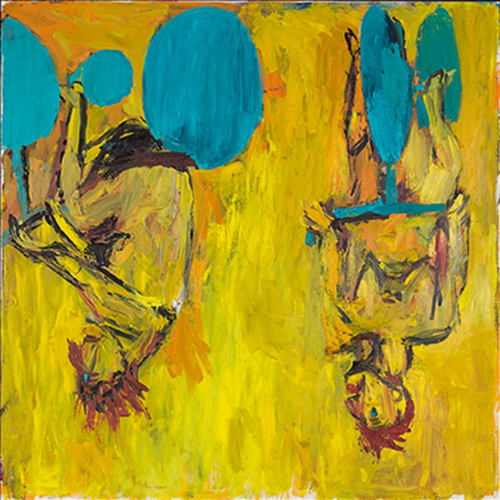 Georg Baselitz, « Die Mädchen von Olmo II », 1981 © Georg Baselitz Photo © Bertrand Prévost - Centre Pompidou, Mnam-Cci / Dist. RMN-GP
Georg Baselitz, « Die Mädchen von Olmo II », 1981 © Georg Baselitz Photo © Bertrand Prévost - Centre Pompidou, Mnam-Cci / Dist. RMN-GPBASELITZ - The retrospective
Centre Pompidou - Paris ( 20 Oct 2021 - 7 Mar 2022 )
"Baselitz – The retrospective" is the first exhaustive exhibition of the German artist in the Centre Pompidou. It brings together his masterpieces of the last six decades in chronological order, revealing his most striking creative periods: from the first paintings and the Pandemonium manifesto in the early 1960s to the Heroes series; from the Fractured compositions and the inverted motifs of 1969, including the successive groups of works for which the artist experimented in masterly fashion with new pictorial techniques featuring varied aesthetics, sustained by references to the history of art and his intimate knowledge of the work of many artists, such as Edvard Munch, Otto Dix and Willem de Kooning, through to the “Russian Paintings” and the self-reflexive creations entitled "Remix" and "Time".
An unclassifiable artist, wavering between figuration, abstraction and a conceptual approach, Georg Baselitz claims to paint images that have not yet existed and to exhume what was rejected in the past: "I was born in the midst of a destroyed order, a landscape in ruins, a people in ruins, a society in ruins. And I didn't want to introduce a new order. I had seen more than enough of so-called orders. I was forced to call everything into question. I had to be ‘naïve’ all over again, begin again. I have neither the sensitivity nor the education or philosophy of the Italian mannerists. But I am a mannerist in the sense that I deform things. I am brutal, naive and Gothic."
Georg Baselitz's powerful work is inextricably linked to the artist's imagination and experience, revealing his constantly renewed questions about opportunities to portray his memories, variations on traditional painting techniques and motifs, aesthetic forms established in the course of the history of art, and the formalisms dictated and communicated by the different political and aesthetic regimes of the 20th and 21st centuries, thus illustrating the complexity of being a painter and an artist in post-war Germany.
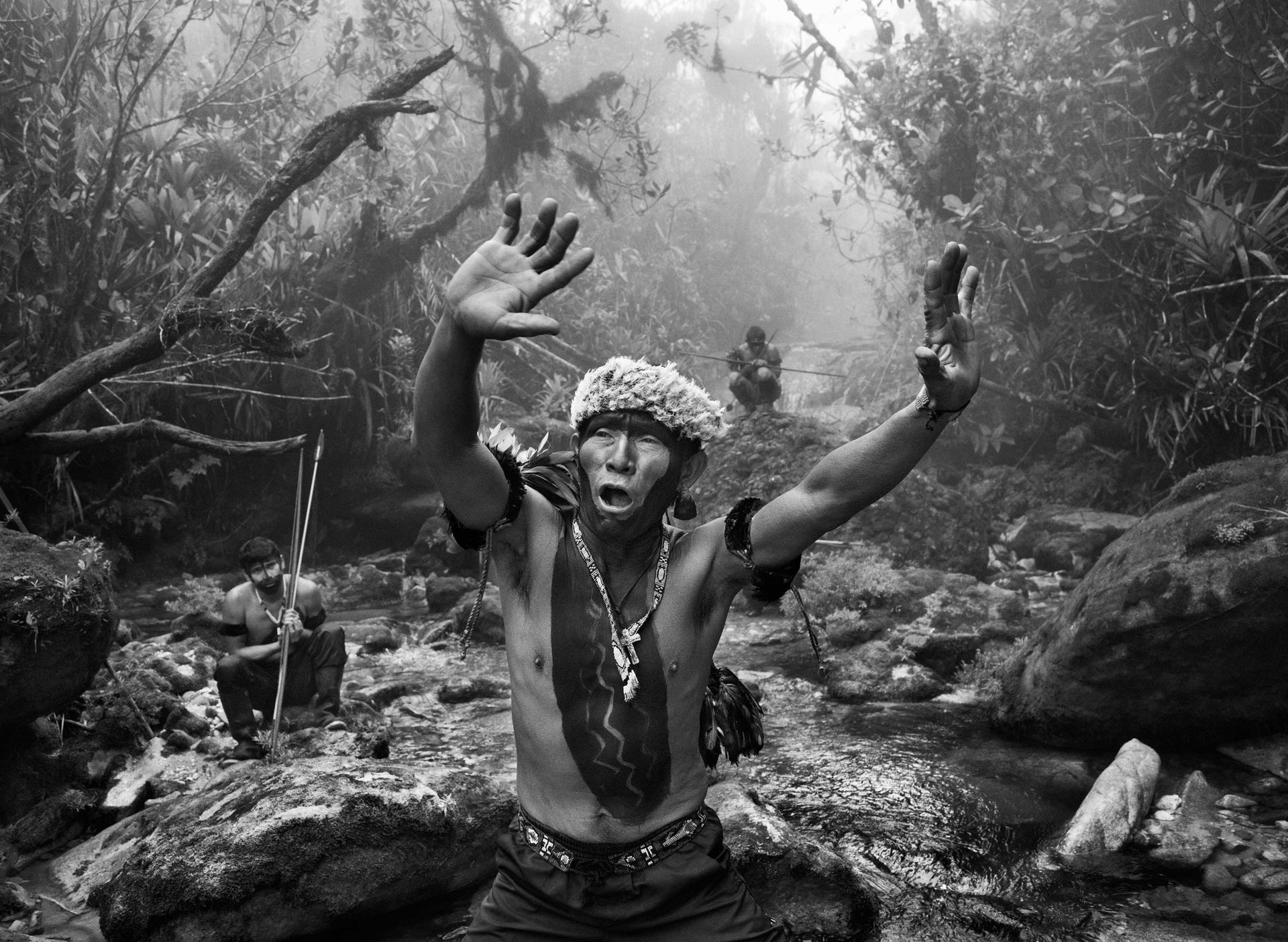 Sebastião SALGADO/nbpictures
Sebastião SALGADO/nbpicturesAmazônia - Sebastião Salgado
Science Museum, Exhibition Road, South Kensington, London (13 October 2021 – 20 March 2022)
‘What I want is to create a discussion about what is happening around the world and to provoke some debate with these pictures,’ Sebastião Salgado once said, having founded Instituto Terra, a non-profit organisation that has turned 17,000 acres of Amazon rainforest into a nature reserve and focuses on reforestation, conservation and environmental education. Returning to London for the first time since 2013, the photojournalist's 200 black and white prints at the Science Museum demonstrate both the delicacy and urgency of the Amazon’s existence. From the communities most affected by the climate crisis to the indigenous leaders whose voices Salgado aims to amplify, it’s a moving, provocative and challenging collection that was seven years in the making and involved working closely with 12 different communities.
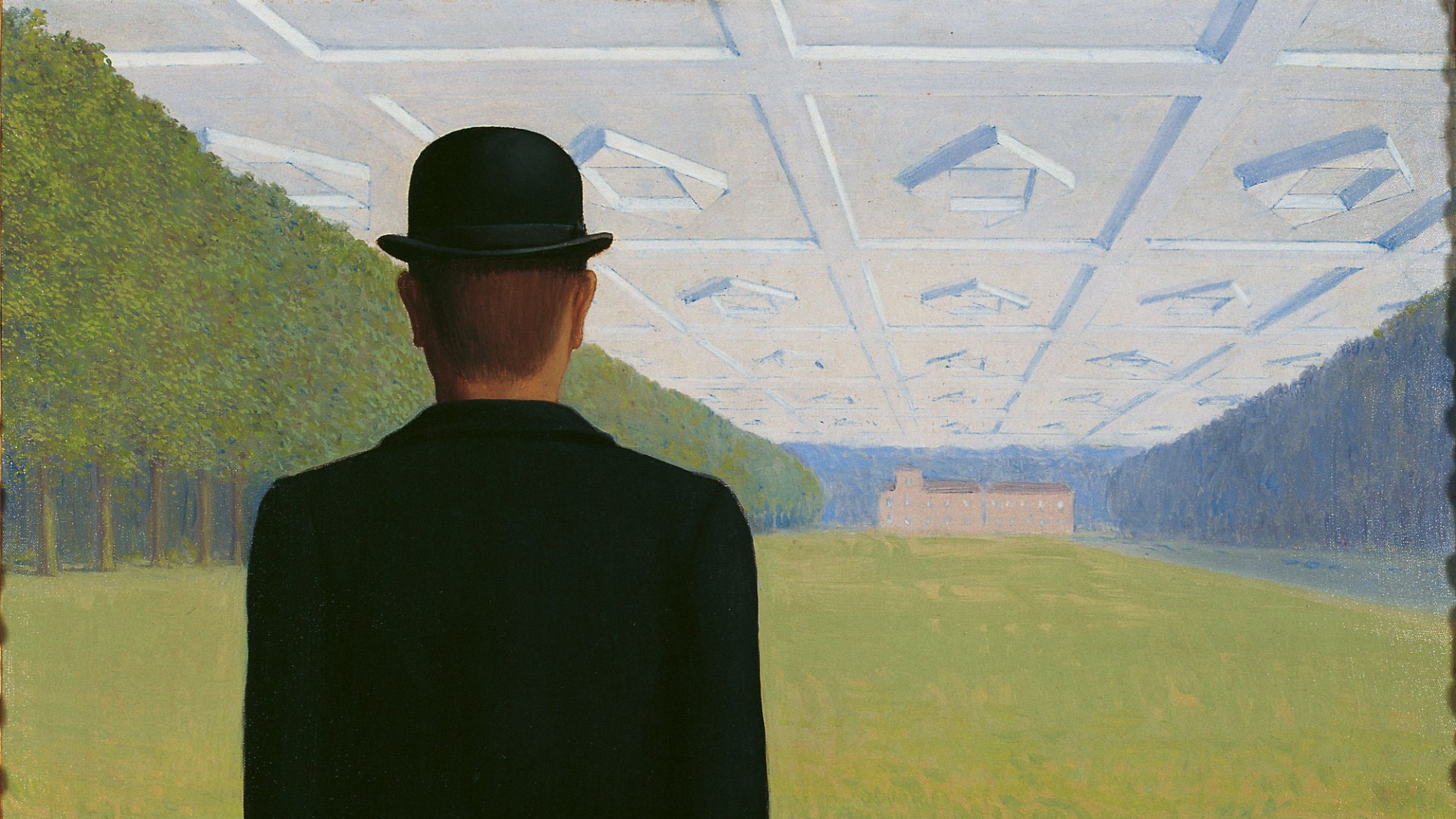 René Magritte. 'El gran siglo', 1954. Óleo sobre lienzo, 50 x 60 cm. Kunstmuseum Gelsenkirchen, lb 65/27. © René Magritte, VEGAP, Madrid, 2021
René Magritte. 'El gran siglo', 1954. Óleo sobre lienzo, 50 x 60 cm. Kunstmuseum Gelsenkirchen, lb 65/27. © René Magritte, VEGAP, Madrid, 2021RENÉ MAGRITTE - The Magritte machine
Museo Nacional Thyssen-Bornemisza ( Madrid ) ( September 14, 2021 - January 30, 2022 )
The exhibition The Magritte machine is the first retrospective devoted to René Magritte (1898-1967) to be held in Madrid since the one organised by the Fundación Juan March in 1989. The title The Magritte machine emphasises the repetitive, combinatorial element present in the work of the great Surrealist painter, whose obsessive themes constantly reappear with innumerable variations.
Curated by Guillermo Solana, artistic director of the Museum, the exhibition brings together more than ninety paintings and an installation in the Sala Balcón Mirador of a selection of photographs and domestic films made by the painter himself.
Magritte's work has introduced highly original approaches and images of great beauty to the art of our time. His pictorial work, in which established rational structures are called into question and accepted temporal, spatial and linguistic values are questioned in favor of other possible ways of understanding the world, reflect many of the concerns of the movement led by André Breton. .
But more than following common interests of surrealism, such as the dream itself or deep psychology, Magritte investigated alternative ways of facing reality based on a fundamental idea: the way things "are" is nothing more than an accepted rational structure collectively. Freedom develops when these parameters of knowledge are called into question and new ones are opened.
The exhibition is divided into seven sections: The powers of the magician, Images and words, Figure and background, The painting and the window, The face and the mask, Mimicry and Megalomania.
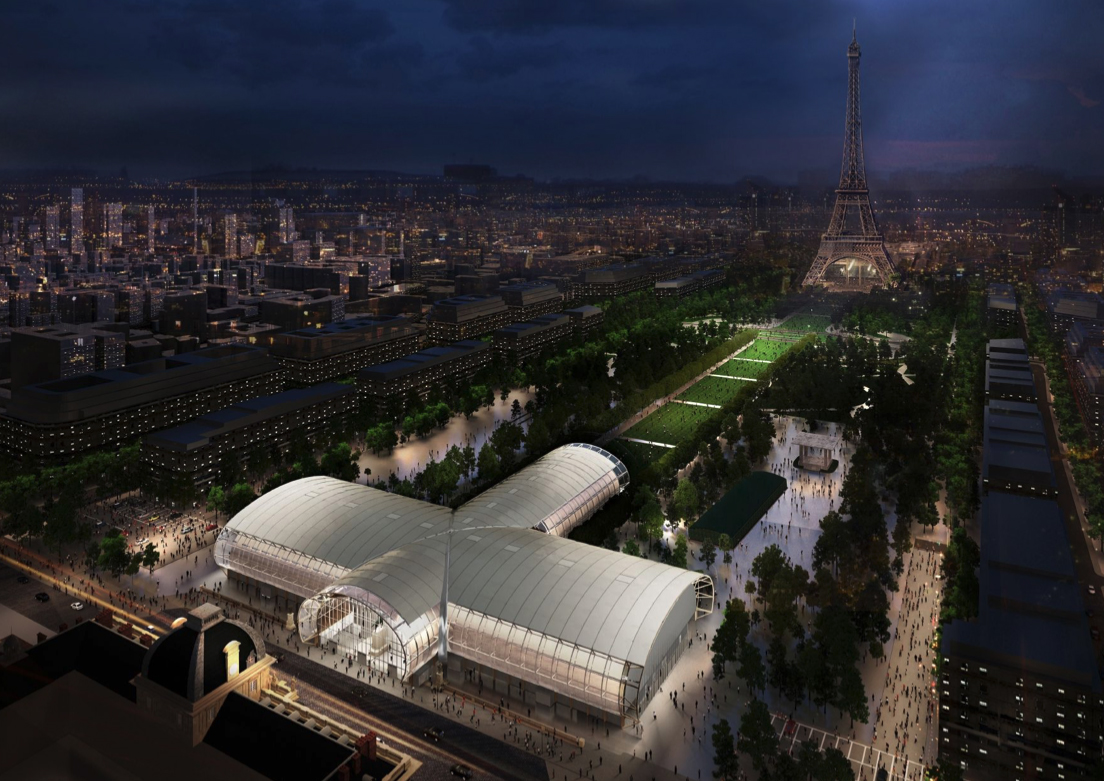 Grand Palais Éphémère - © Wilmotte & Associés Architectes
Grand Palais Éphémère - © Wilmotte & Associés ArchitectesART PARÍS 2021
Grand Palais Éphémère ( 9 to 12 September 2021 )
Art Paris will be the very first arts event to be held at the Grand Palais Éphémère on the Champ-de-Mars, a spectacular structure fit for the 21st century designed by Jean-Michel Wilmotte.
This 23rd edition with some 140 modern and contemporary art galleries from 23 countries (and the noteworthy arrival of several leading galleries) will showcase an outstanding selection of works. Both a regional and cosmopolitan fair, Art Paris plays host to large, prestigious galleries alongside small independents mainly from Europe, but also from such far-flung locations as South Korea, Colombia, the Ivory Coast, Guatemala and Uruguay.
The main theme of the 2021 edition is the return to painting. In Portraiture and Figuration, A Focus on the French Scene, independent exhibition curator Hervé Mikaeloff presents his perspective on the revival of figurative painting in France with a selection of 20 artists from amongst the exhibiting galleries.
Art Paris also encourages the presentation of monographic exhibitions - twenty-six this year - whilst supporting young galleries and emerging artists in the “Promises” section, which provides a forward-looking perspective with cutting-edge contemporary galleries from Abidjan, Guatemala City, Marseille, and Paris.
